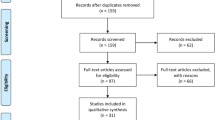Abstract
After it was reported that increased tissue iron concentrations were associated with increased echogenicity of the substantia nigra (SN) obtained with transcranial sonography (TCS) in animal and postmortem studies, our goal was to use this method in a disorder characterized with iron accumulation in human brain tissue. Therefore, magnetic resonance imaging (MRI) and TCS were conducted in 5 unrelated patients with pantothenate kinase-associated neurodegeneration (PKAN), caused by PANK2 mutations. All patients had an eye of the tiger sign. Hypointense lesions on the T2-weighted MRI images were restricted to the globus pallidus (GP) and SN. TCS also revealed bilateral hyperechogenicity restricted to the LN and SN, with normal DTV values. Both TCS and MRI studies in PKAN patients are in accordance with the pathological findings that accumulation of iron, even in advanced cases, is restricted to the GP and SN, suggesting selective involvement of these structures.

Similar content being viewed by others
References
Becker G, Seufert J, Bogdahn U, Reichmann H, Reiners K (1995) Degeneration of substantia nigra in chronic Parkinsonʼs disease visualized by transcranial color-coded real-time sonography. Neurology 45:182–184
Berg D, Siefker C, Becker G (2001) Echogenicity of the substantia nigra in Parkinsonʼs disease and its relation to clinical findings. J Neurol 248:684–689
Walter U, Wittstock M, Benecke R, Dressler D (2002) Substantia nigra echogenicity is normal in non-extrapyramidal cerebral disorders but increased in Parkinsonʼs disease. J Neural Transm 109:191–196
Berg D, Godau J, Walter U (2008) Transcranial sonography in movement disorders. Lancet Neurol 7:1044–1053
Skoloudík D, Walter U (2010) Method and validity of transcranial sonography in movement disorders. Int Rev Neurobiol 90:7–34
Berg D, Becker G, Zeiler B et al (1999) Vulnerability of the nigrostriatal system as detected by transcranial ultrasound. Neurology 53:1026–1031
Berg D, Roggendorf W, Schroder U et al (2002) Echogenicity of the substantia nigra: association with increased iron content and marker for susceptibility to nigrostriatal injury. Arch Neurol 59:999–1005
Hochstrasser H, Bauer P, Walter U et al (2004) Ceruloplasmin gene variations and substantia nigra hyperechogenicity in Parkinson disease. Neurology 63:1912–1917
Berg D, Hochstrasser H, Schweitzer KJ, Riess O (2006) Disturbance of iron metabolism in Parkinsonʼs disease—ultrasonography as a biomarker. Neurotoxic Res 9:1–13
Berg D, Godau J, Riederer P, Gerlach M, Arzbetrger T (2010) Microglia activation is related to substantia nigra echogenicity. J Neural Transm 117:1287–1292
Hayflick SJ, Westaway SK, Levinson B et al (2003) Genetic, clinical, and radiographic delineation of Hallervorden-Spatz syndrome. N Engl J Med 348:33–40
Zhou B, Westaway SK, Levinson B, Johnson MA, Gitschier J, Hayflick SJ (2001) A novel pantothenate kinase gene (PANK2) is defective in Hallervorden-Spatz syndrome. Nat Genet 28:345–349
Hartig MB, Hortnagel K, Garavaglia B et al (2006) Genotypic and phenotypic spectrum of PANK2 mutations in patients with neurodegeneration with brain iron accumulation. Ann Neurol 59:248–256
Mijajlović M, Petrović I, Stojković T, Svetel M, Stefanova E, Kostić VS (2008) Transcranial parenchymal sonography in Parkinson’s disease. Vojnosanit Pregl 65:601–605
Huber H (2010) Transcranial sonography–anatomy. Int Rev Neurobiol 90:35–45
Gregory A, Hayflick SJ (2005) Neurodegeneration with brain iron accumulation. Folia Neuropathol 43:286–296
Berg D, Grote C, Rausch WD et al (1999) Iron accumulation in the substantia nigra in rats visualized by ultrasound. Ultrasound Med Biol 25:901–904
Zecca L, Berg D, Arzberger T et al (2005) In vivo detection of iron and neuromelanin by transcranial sonography: a new approach for early detection of substantia nigra damage. Mov Disord 20:1278–1285
Spatz H (1922) Uber des Eisenmachweiss im Gehirn besonders in Zentren des extra-pyramidalmotorischen Systems. Z Gesamte Neurol Psychiatr 77:261
Swaiman KF (1991) Hallervorden-Spatz syndrome and iron brain metabolism. Arch Neurol 48:1285–1293
Schneider SA, Hardy J, Bhatia KP (2009) Iron accumulation in syndromes of neurodegeneration with brain iron accumulation 1 and 2: causative or consequential? J Neurol Neurosurg Psychiatry 80:589–590
Koeppen AH, Dickson AC (2001) Iron in the Hallervorden-Spatz syndrome. Pediatr Neurol 25:148–155
Mutoh K, Okuno T, Ito M et al (1988) MR imaging of a group I case of Hallervorden-Spatz disease. J Comput Assist Tomogr 12:851–853
Sethi KD, Adams RJ, Loring DW, Gammal T (1988) Hallervorden-Spatz syndrome: clinical and magnetic resonance imaging correlations. Ann Neurol 24:692–694
McNeill A, Birchall D, Hayflick SJ et al (2008) T2* and FSE MRI distinguishes four subtypes of neurodegeneration with brain iron accumulation. Neurology 70:1614–1619
Lee JH, Kim DS, Baik SK, Nam SO (2010) Nigropallidal iron accumulation in pantothenate kinase-associated neurodegeneration demonstrated by susceptibility-weighted imaging. J Neurol 257:661–662
Hayflick SJ, Penzien JM, Michi W, Sharif UM, Rosman NP, Wheeler PG (2001) Cranial MRI changes may precede symptoms in Hallervorden-Spatz syndrome. Pediatr Neurol 25:166–169
Hayflick SJ, Hartman M, Coryell J, Gitschier J, Rowley H (2006) Brain MRI in Neurodegeneration with brain iron accumulation with and without PANK2 mutations. Am J Neuroradiol 27:1230–1233
Bruggemann N, Hagenah J, Reetz K et al (2010) Recessively inherited parkinsonism: effect of ATP13A2 mutations on the clinical and neuroimaging data. Arch Neurol 67:1357–1363
Liman J, Wellmer A, Rostasy K, Bahr M, Kermer P (2011) Transcranial ultrasound in neurodegeneration with brain iron accumulation (NBIA). Eur J Paediatr Neurol. doi:10.1016/ejpn.2011.07.009
Acknowledgments
This study was supported by a grant from the Ministry of Science and Technology, Republic of Serbia (project no. 175090). VSK had full access to all of the data in the study and takes responsibility for the integrity of the data and the accuracy of the data analysis.
Conflict of interest
The authors declare that they have no conflicts of interest.
Author information
Authors and Affiliations
Corresponding author
Rights and permissions
About this article
Cite this article
Kostić, V.S., Svetel, M., Mijajlović, M. et al. Transcranial sonography in pantothenate kinase-associated neurodegeneration. J Neurol 259, 959–964 (2012). https://doi.org/10.1007/s00415-011-6294-4
Received:
Revised:
Accepted:
Published:
Issue Date:
DOI: https://doi.org/10.1007/s00415-011-6294-4




